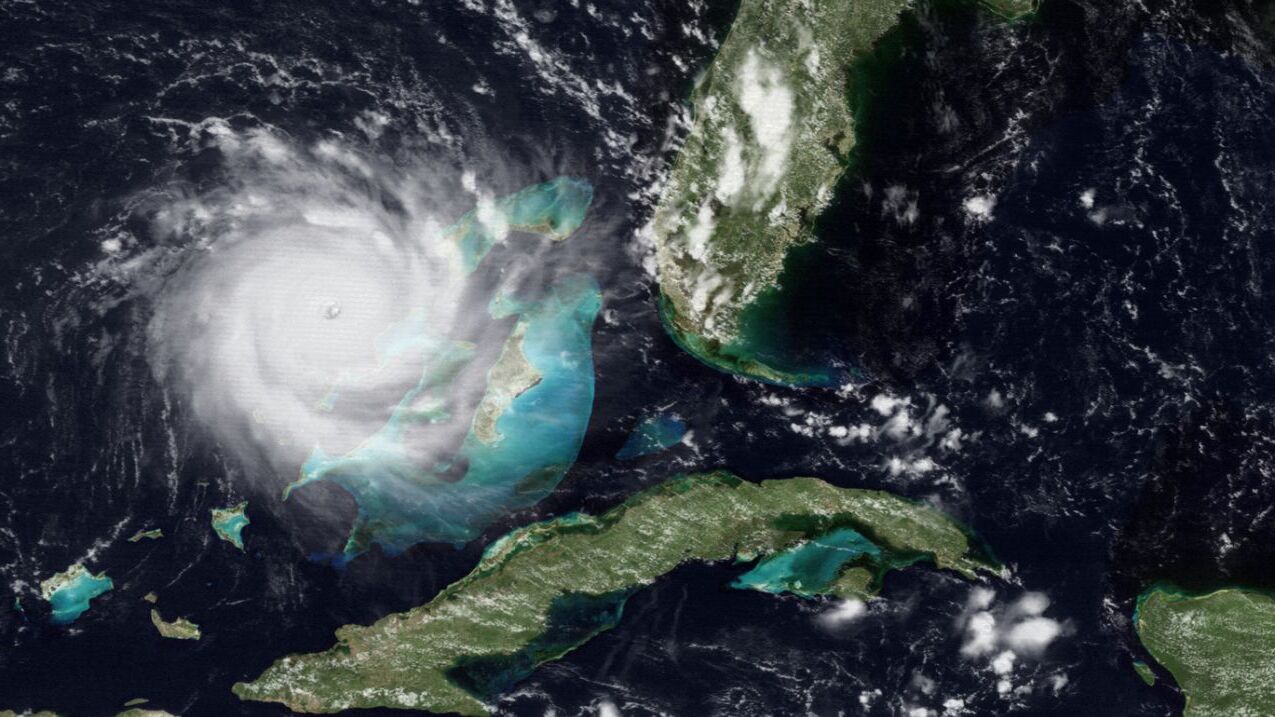
Hurricane Andrew was one of the most powerful and destructive hurricanes to ever hit the United States. Striking in August 1992, it left a trail of devastation across the Bahamas, Florida, and Louisiana. With wind speeds reaching up to 175 mph, Andrew caused billions of dollars in damage and changed the lives of thousands. But what made this storm so unforgettable? Was it the sheer force, the unexpected path, or the aftermath that reshaped communities? In this post, we'll uncover 25 intriguing facts about Hurricane Andrew, shedding light on its impact, statistics, and the lessons learned from this natural disaster. Get ready to dive into the whirlwind of history that was Hurricane Andrew.
The Birth of Hurricane Andrew
Hurricane Andrew was one of the most devastating hurricanes in U.S. history. Its impact was felt far and wide, leaving a lasting mark on those who experienced it.
-
Hurricane Andrew formed on August 16, 1992. It started as a tropical wave off the coast of Africa before developing into a tropical storm.
-
It became a hurricane on August 22, 1992. Rapid intensification occurred, turning it into a Category 5 hurricane by August 23.
The Path of Destruction
Andrew's path was both destructive and deadly. It wreaked havoc across multiple regions, causing significant damage.
-
Andrew made landfall in the Bahamas on August 23, 1992. It caused widespread destruction, particularly on Eleuthera and the Berry Islands.
-
The hurricane struck Florida on August 24, 1992. It hit Homestead, Florida, with winds reaching 165 mph, causing catastrophic damage.
-
Andrew continued to Louisiana. After devastating Florida, it moved into the Gulf of Mexico and made a second landfall in Louisiana on August 26, 1992.
The Impact on Communities
The hurricane's impact on communities was severe, with many people losing their homes and livelihoods.
-
Andrew destroyed over 63,000 homes in Florida. Entire neighborhoods were flattened, leaving thousands homeless.
-
It caused $27.3 billion in damage. This made it the costliest hurricane in U.S. history at the time.
-
Andrew left 175,000 people homeless. The aftermath saw a massive displacement of residents.
The Human Toll
The human toll of Hurricane Andrew was significant, with many lives lost and countless others affected.
-
Andrew caused 65 fatalities. The majority of deaths occurred in Florida, with others in Louisiana and the Bahamas.
-
Over 250,000 people were evacuated. Emergency services worked tirelessly to move residents to safety.
Environmental Impact
The hurricane also had a profound effect on the environment, altering landscapes and ecosystems.
-
Andrew destroyed 70,000 acres of trees in the Everglades. The storm's powerful winds uprooted and snapped trees, changing the landscape.
-
It caused significant damage to coral reefs. The reefs off the coast of Florida suffered from the hurricane's force.
Government and Emergency Response
The response to Hurricane Andrew highlighted both strengths and weaknesses in disaster preparedness and response.
-
The National Guard was deployed. Over 7,000 National Guard troops were mobilized to assist with recovery efforts.
-
FEMA faced criticism. The Federal Emergency Management Agency was criticized for its slow response and lack of preparedness.
-
New building codes were implemented. In the aftermath, Florida revised its building codes to better withstand future hurricanes.
Long-term Effects
The long-term effects of Hurricane Andrew are still felt today, influencing policies and practices in disaster management.
-
Insurance companies faced massive payouts. The financial strain led to changes in how insurance companies handle hurricane coverage.
-
Andrew led to advancements in meteorology. Improved forecasting and tracking technologies were developed as a result.
-
It spurred community resilience. Communities came together to rebuild, fostering a spirit of resilience and cooperation.
Lessons Learned
Hurricane Andrew taught valuable lessons about preparedness, response, and recovery.
-
The importance of early warning systems. Timely warnings helped save lives and reduce injuries.
-
The need for better infrastructure. Stronger buildings and infrastructure are crucial in hurricane-prone areas.
-
Community preparedness is key. Educating and preparing communities can mitigate the impact of future hurricanes.
Personal Stories
The stories of those who lived through Hurricane Andrew are both heartbreaking and inspiring.
-
Survivors shared tales of bravery. Many residents risked their lives to help neighbors and strangers alike.
-
Families were reunited. Despite the chaos, many families found each other and provided mutual support.
-
Volunteers played a crucial role. Volunteers from across the country came to aid in the recovery efforts.
-
The legacy of Andrew lives on. The lessons learned continue to shape how we prepare for and respond to hurricanes today.
The Lasting Impact of Hurricane Andrew
Hurricane Andrew left a mark on history. It wasn't just the destruction of homes and infrastructure; it was the resilience of the people affected. Communities came together, rebuilding lives and neighborhoods. The storm also led to significant changes in building codes and emergency preparedness. Lessons learned from Andrew have made us better equipped for future hurricanes.
The economic impact was massive, but the human spirit proved stronger. Andrew's legacy is a testament to the power of nature and the strength of those who endure it. Understanding these facts helps us appreciate the advancements in meteorology and disaster response.
Hurricane Andrew serves as a reminder of the importance of preparedness and community support. It showed us that even in the face of overwhelming odds, we can rebuild and come back stronger.
Was this page helpful?
Our commitment to delivering trustworthy and engaging content is at the heart of what we do. Each fact on our site is contributed by real users like you, bringing a wealth of diverse insights and information. To ensure the highest standards of accuracy and reliability, our dedicated editors meticulously review each submission. This process guarantees that the facts we share are not only fascinating but also credible. Trust in our commitment to quality and authenticity as you explore and learn with us.


